News //
We are masked up in style! Featured on our museum’s new face masks are five strange animals living in Southeast Asia, creatures most know little about. They highlight the incredible biodiversity in the region and are a conversation starter on the urgent need to discover, study and conserve them! Read on to learn more about them.
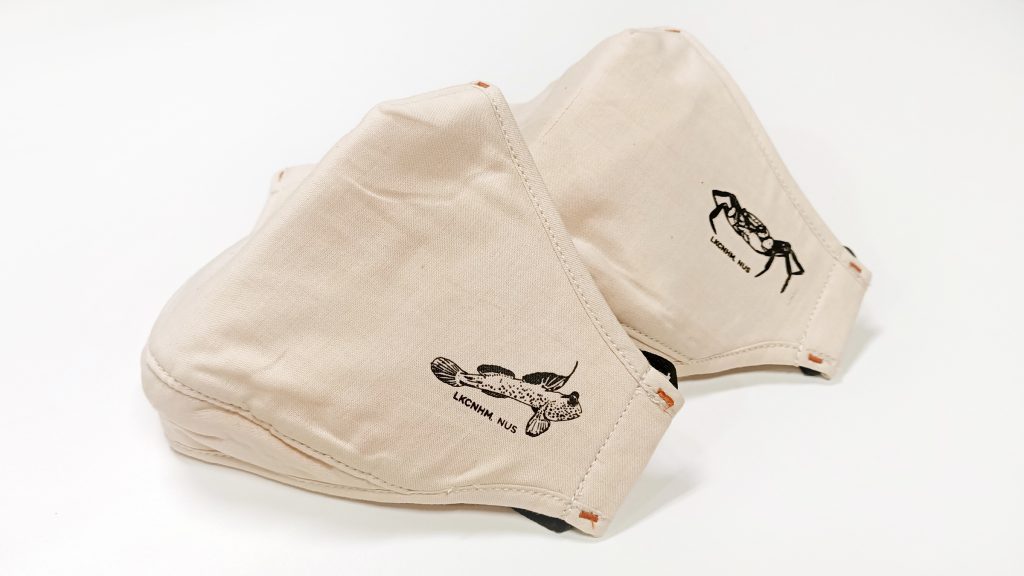
This speckled fish with its top (dorsal) fin extended upright is the gold-spotted mudskipper (Periophthalmus chrysospilos). This is one of the most iconic animals of Singapore’s mangroves. It is one of the most “unfish-like” fish alive—it is able to breathe on land (by gulping water to fill its gill chambers), actually “walks” around the mud on its outsized front fins, and avoids the incoming tides by digging and hiding in deep mud burrows! It is truly a master of adaptation.
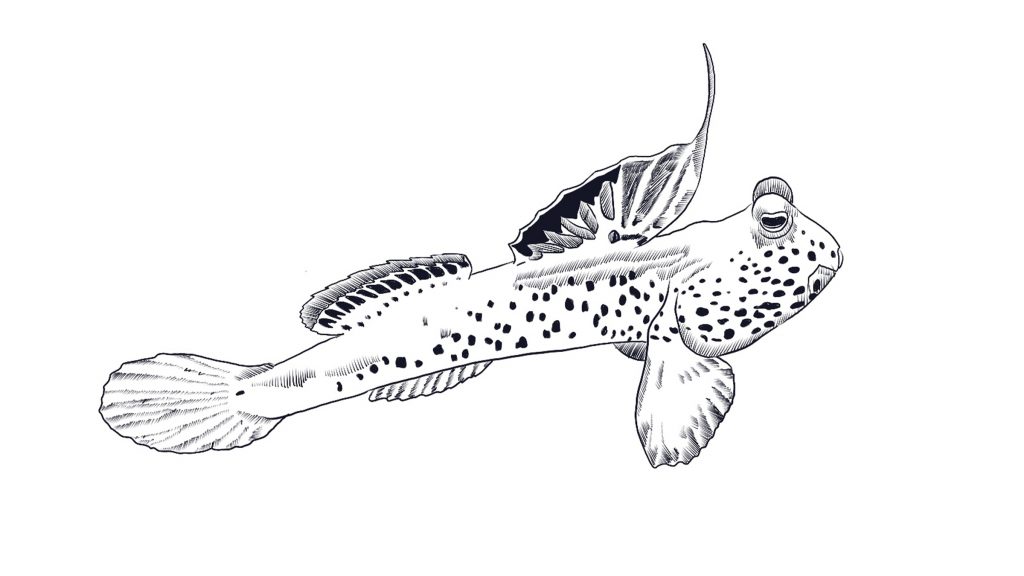
The Padawan crab (Lepidothelphusa padawan) is a Bornean endemic that lives only in isolated freshwater streams. It is a striking black-and-white—exactly like a giant panda! This is a very unusual colour pattern for a crab but it breaks up the outline of the animal, helping it better camouflage among the rocks it lives among. It was discovered only in 2015 and no, its name has nothing to do with Star Wars. The crab is actually named after a district in Sarawak where it was found!
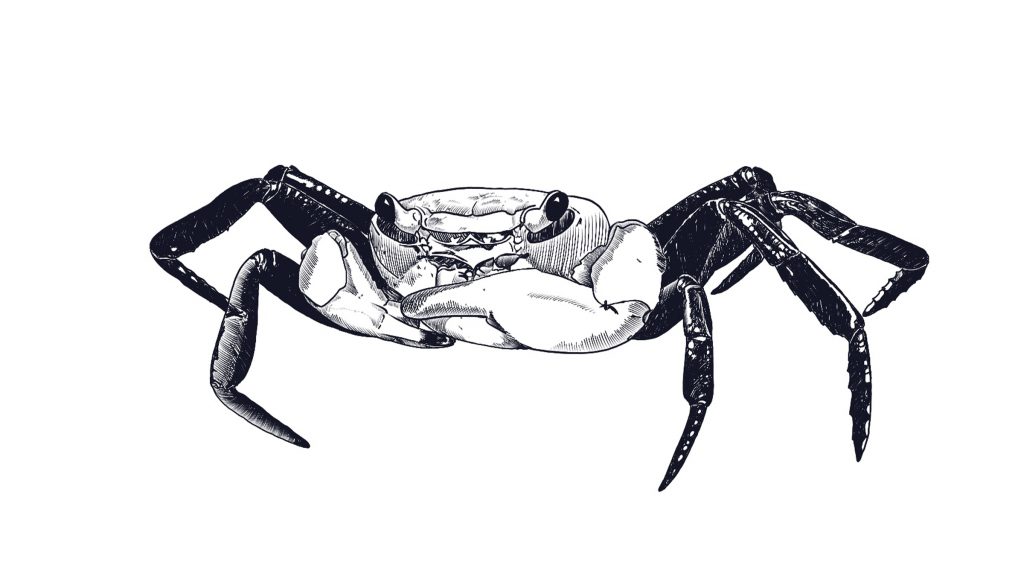
The skull below sports a pair of devilish horn-like projections, but these are actually the long canines of a male babirusa (Babyrousa sp.), a wild pig endemic to Indonesia’s islands. These curving tusks are probably used for display. They continue to grow throughout the adult male’s life, even curling backwards to pierce into the snout’s flesh!
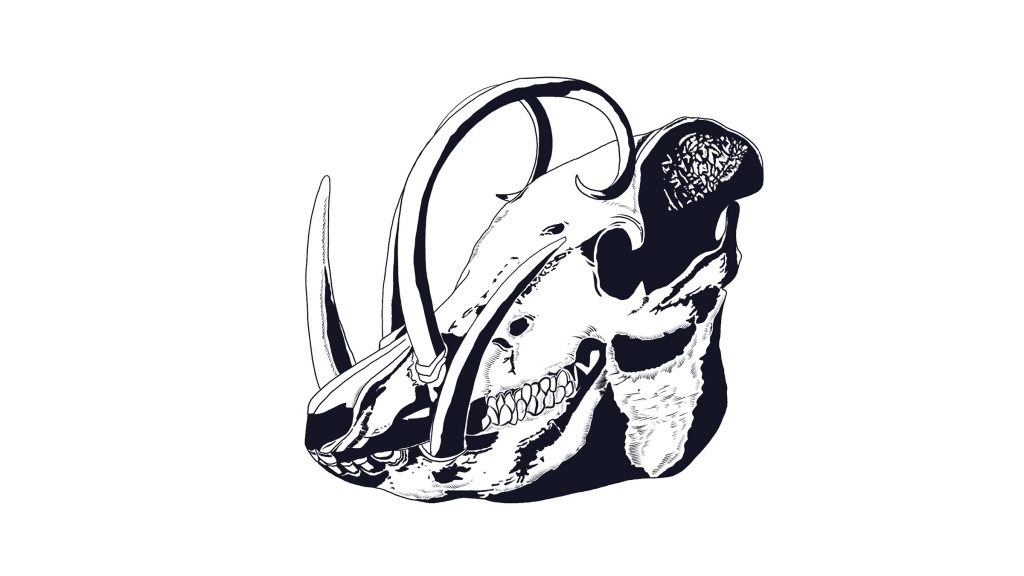
The next animal bides its time, staying unnoticed and awaiting for unsuspecting prey to cross its path. The Malayan horned frog’s (Megophrys nasuta) common name was inspired by the triangular projections of the frog’s upper eyelids and snout, which also lends it a striking similarity to a fallen leaf, helping it blend perfectly on the forest floor. This voracious frog also has one of the most distinctive calls in the rainforest—a loud metallic honk!
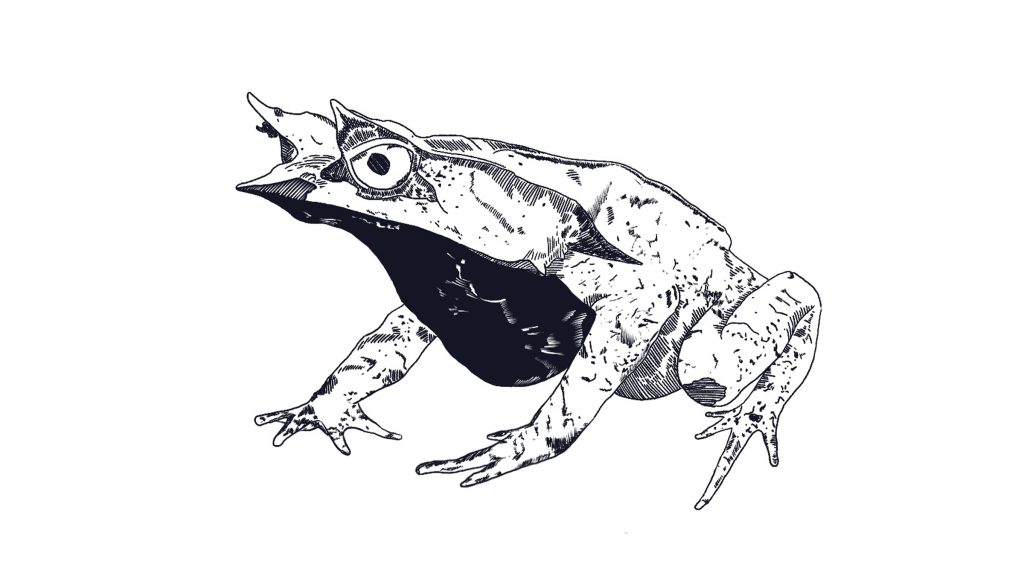
Finally, this funky looking critter is a trilobite beetle (Platerodrilus ruficollis) native to Singapore, named after (but not related to) the trilobites, a group of extinct arthropods from a quarter billion years ago, it resembles. The beetles exhibit adult sexual dimorphism—the males are normal winged beetles a mere 2 millimetres in length, but the females retain their alien looking, wingless larvae form into adulthood and grow to 50 millimetres! Even more bizarre is that the males die after mating, and the females go the same way after laying her fertilized eggs among rotting wood.
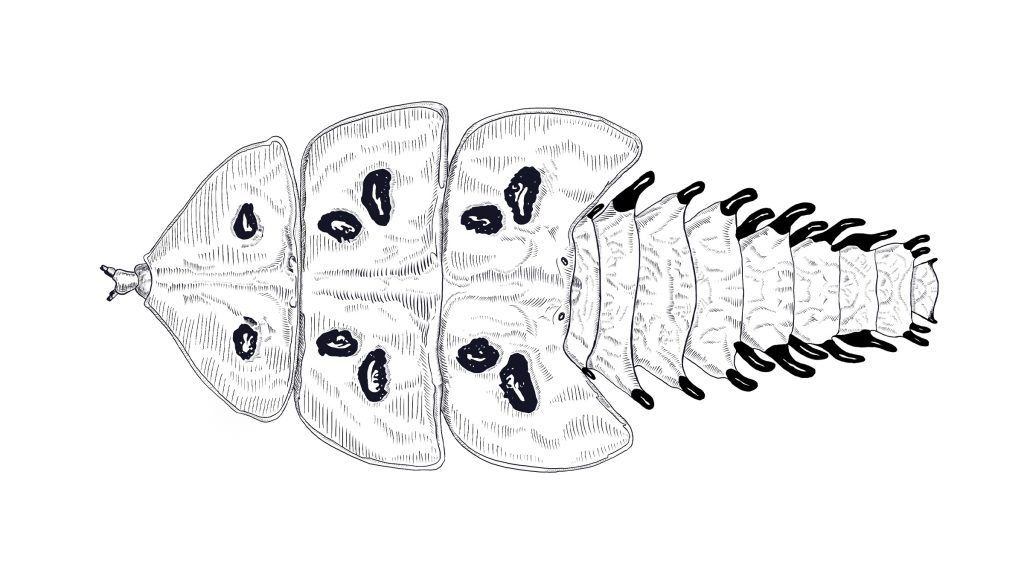
These artwork were created by our research assistant, Wendy Zhang. As a passionate scientific illustrator, she always wanted to bring our less-known biodiversity to light. She chose to illustrate these lesser-known fauna in hopes that “it would encourage conversations and curiosity about our region’s biodiversity when they see our staff wearing our masks out and about.” Check out more of her work on Instagram @wzyuh!
We continue to put the welfare of our staff and visitors as our top priority, and we produced these specially designed face masks for all our staff to help protect them from the COVID-19 pandemic. The masks are not currently for sale.